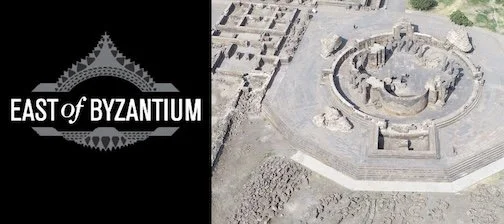Online Lecture
Creating Christian Sacred Spaces: The Armenian Case (4th–7th Centuries)
Nazénie Garibian
The Mary Jaharis Center for Byzantine Art & Culture Lecture Series
Zoom
4 November 2025, 12:00 PM–1:30 PM ET
Archaeological Site of Zvartnots from above. Photo: Nazénie Garibian
Nazénie Garibian, Mesrop Mashtots Institute of Ancient Manuscripts Matenadaran and State Academy of Fine Arts of Armenia, explores the creation of Christian sacred spaces in Armenia, from its official conversion at the beginning of the 4th century to the definitive establishment of Arab rule at the end of the 7th century.
This lecture offers a case study on the creation of Christian sacred spaces in Armenia, from its official conversion at the beginning of the 4th century to the definitive establishment of Arab rule at the end of the 7th century. This is a complex and turbulent transitional period for all of Christendom, during which the gradual transformation of the religious landscape is carried out through the marking of both physical grounds and human minds, conceived as a single space of the Church. Accordingly, any theological concept relating to the Church in its universal and eternal sense becomes applicable to this space. However, Christianity was adopted in Armenia largely by adapting to the existing political and social structures, as well as to the previous local religious traditions. Moreover, the fluctuating historical conditions inherent to the contact zones between the Roman/Byzantine and Iranian worlds profoundly shaped the formation of Armenian Christian identity and thought. All these factors largely defined the specificities of the concept and architectural organization of Armenian sanctuaries in the period under consideration.
The lecture is structured around three main themes. The first theme focuses on the foundation of Armenian ecclesiastical institutions connected with the earliest Christian sanctuaries. The latter’s establishment, character, and geographical distribution will be analyzed using source evidence and situated within the historical context of the region during the first decades of the 4th century.
The second theme addresses the adoption in Armenia of sacred models originating from the Holy Land, particularly Jerusalem, with the aim of creating a ‘New Jerusalem’ in Armenia at the beginning of the 5th century. The theological motivations underlying this initiative will be examined within the context of the contemporary political situation. The Armenian case will also be compared with similar examples among neighboring Christian countries in the Caucasus.
The third theme explores the development of major ecclesiastical complexes from the 4th to the 7th centuries, which served as the household and see of the Catholicoi of Armenia. Three selected examples – Ashtishat, Dvin, and Zvartnots – will be analyzed within the framework of a new urban concept: the ‘church-city’. Inheriting the tradition of the ancient ‘temple-towns’, the spatial organization and architecture of these religious centers were designed, drawing inspiration from the sacred model of Jerusalem perceived as quintessential Christian Temple, Church, and Holy City.
This lecture will take place live on Zoom, followed by a question and answer period. Please register to receive Zoom link.
For more information and to register, visit https://maryjahariscenter.org/events/creating-christian-sacred-spaces

